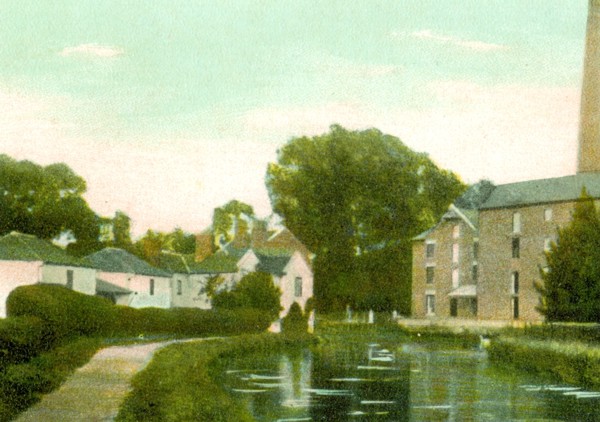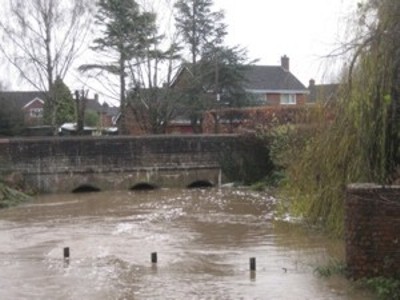The River Roden- Wem

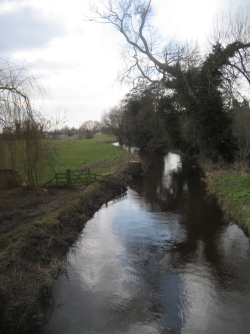 |
The River Roden is formed by three streams that converge to the west of Wem. These rise in Whixall Moss, Bettisfield and in the township of Lee. Garbutt noted that they powered mills in Crowsmere and at Lineal. It flows in an artificial channel past the villages of Loppington and Tilley,where it joins Sleap Brook and enters Wem, passing under Mill Street. For centuries, it has been employed as as source of power for the Mill in the town. A dam was constructed to provide a head of water for the wheel. Before the coming of the railways, it was also used for transport, with flat bottomed boats transporting goods to villages downstream. Leaving Wem, it meanders beween the villages of Aston and Lee Brockhurst, where it has cut deeply into the underlying rock, avoiding the harder sandstone on which Lee Brockhurst is built. The road between the villages has to descend steep slopes and a sharp bend at Thistleford Bridge, before rising again to Lee Brockhurst.The bridge itself is Grade II listed and was built in 1796 and is coursed and dressed in red sandstone.The parapets were raised in 1844 at the suggestion of Edward Haycock, the county surveyor. The Shropshire Way footpath to the village climbs 17 metres and has 100 steps.The river then meanders southwards past Stanton upon Hine Heath before joining the River Tern, which in turn joins the Severn. |
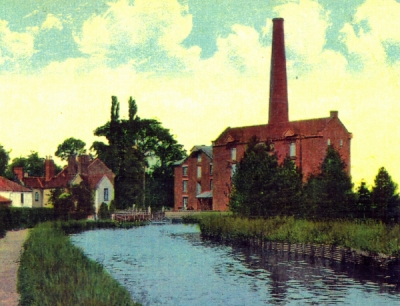 |
Early history of the mill.
The estate map of Thomas, Earl of Arundel in 1931 shows the mill pond and backwater. The mill had a waterwheel on the north side. In addition to water milling, Wem also had a windmill on the castle mound,
but By the middle of the 18th.C the windmill had gone and much of the original stone work had been removed. Its owners considered it an eyesore (From 'Tilley the Secret History of a Secret Place' by Alastair Reed) |
Mill expansion and closure
|
The mill was enlarged in 1819 and the chimney was added in 1834 when the mill owner, Mr John Boughy, converted the old water powered mill to coal-fired steam. By 1901, when this photo was taken,
gas power was used and there were 3 sets of grinding stones in use.In 1917, Philip Lee was listed in Kelly as company secretary and John Mitton as General manager.
The Kelly's directory entry for 1934 describes the mill as noted for high grade cattle feeding stuffs, own make pig meal a speciality. The business continued to flourish into the seventies.
ClosureHowever, in the mid eighties, European quotas on milk production dramatically reduced the demand for its feed products, and in April 1985, it closed altogether.
|
The River in Wem -2012
|
Today,the B5476 passes over the bridges by the mill, which has been re-developed for flats. After many delays and changes of owner, it was completed.
The land to the west of the road has had several proposals for development, despite being on the Shropshire Way footpath and being a migration trail for the great Crested Newt. It is also at threat of flooding.
the high waters in October 2012 came within inches of the top of the bridge arch as can be seen in the photographs.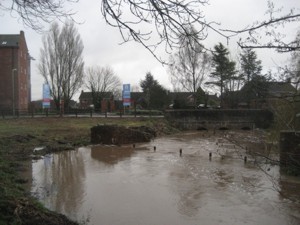
|
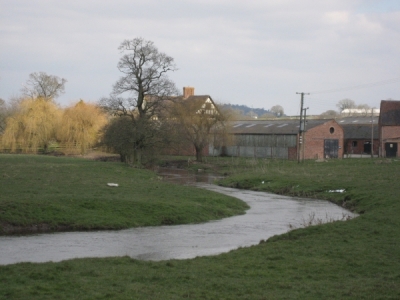 The river from Aston Bridge looking east to Aston Hall |
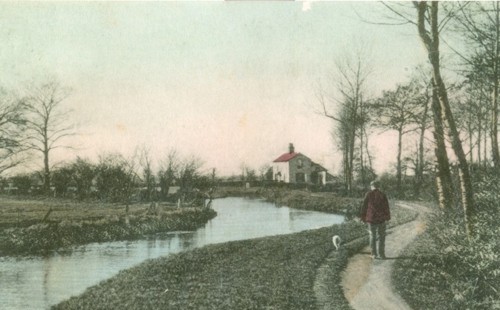 Man and Dog walking on the path to Tilley 1905 |
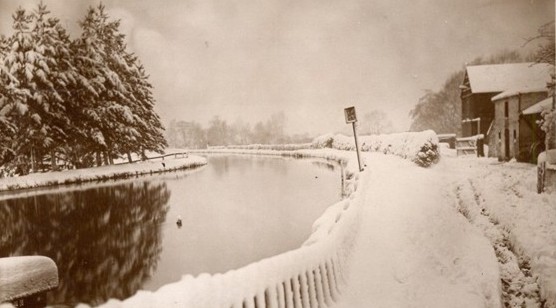 Snow on the Mill Dam 1913 |
 A baptism (possibly) pre 1912, Photo Audin Wood |
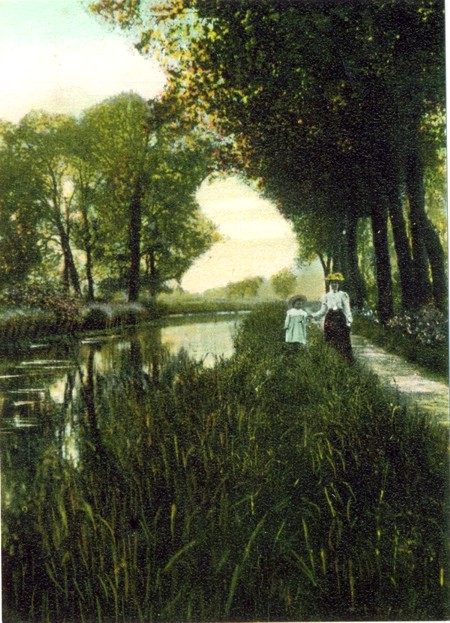 Walking along the Roden |
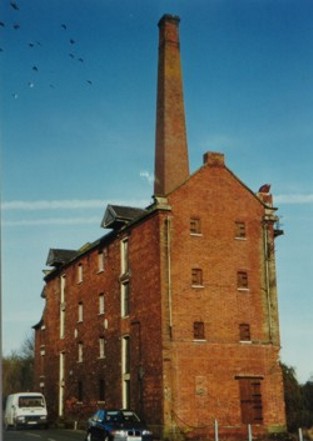 The Mill in 1989 |
